Digital transformation in retail and why it so crucial now
The coronavirus outburst continues to disrupt businesses across all industries on a global scale. Cases are counted in millions already and the US is on top of the list of most affected countries.
An increasing number of consumers are turning to online stores with accelerated delivery options during the pandemic isolation. The traditional retail industry is one of those taking the most hits, especially the businesses that still rely on a brick-and-mortar infrastructure.
A lot of retail companies may think that simply having a website and an online catalog can offer an all-in-one solution. The reality, however, is that a single independent digital channel is completely ineffective. Full digital retail transformation with the introduction of an omnichannel eCommerce solution is the answer.
Read on to find out more about retail digital transformation, how to implement it for your business and check out examples of digital retail solutions from Distributed Hub.
Digital Retail Trends in 2020: How Coronavirus Transformed Shopping Habits
Skyrocketing coronavirus cases have forced many communities into full lockdown. This has led consumers to greatly reduce store visits and change their shopping & consumption patterns. Meanwhile online shopping, click-and-collect, and home delivery services are thriving. Meal delivery and video streaming are currently the most popular amongst online services as Generation Z and millennials keep themselves entertained at home, eating restaurant food and binge-watching their favorite shows.
At the same time, the situation also has a negative economic impact on jobs in brick-and-mortar based businesses, as employees in food & beverage, travel, accommodations, and hospitality are being laid off. Let’s have a look at those businesses which are facing extreme setbacks consequent to losing customer visits to their store locations:
Locations people in the US avoid during coronavirus spread. Source
This situation carries a snowball effect that will continue to worsen as the number of coronavirus-positive cases rises and people remain shut down in isolation. Retail outlets need to quickly adopt new strategies to better align themselves with the changes in consumers’ purchasing patterns.
How to Respond to Changing Buying Habits of Consumers?
The pandemic has led most people to turn to online shopping & delivery. Consumers are purchasing items and services that satisfy their basic needs of living in isolation: food, entertainment, and communication. At the same time, sales of other products have begun to decline sharply. One of the major reasons for this is the limited online features provided by most retailers that do not allow customers to have a full 360o view of the product.
Products sold the most during the pandemic. Source
After the pandemic is over, some consumers are expected to switch back to their regular in-store shopping activities However, we assume that many consumers will have made an irreversible shift to online shopping and delivery due to the advantages of digital retail outlets. These include special offers, sizable discounts, product customization, personalized shopping experience, etc. To counter the COVID-19 isolation issues, store owners immediately need to initialize digital retail transformation.
Digital Retail: The What, the Why, and the How
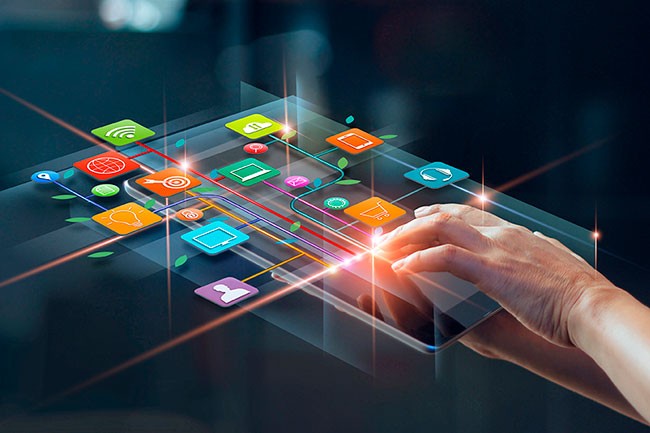
Single-channel retail businesses relying mostly on their brick-and-mortar locations, traditional marketing and merchandising are increasingly becoming outdated. That’s exactly why Amazon and Walmart are now the prime retail outlets, providing an omnichannel shopping experience.
Omnichannel retail gives customers the convenience of ordering goods online and allows them to pick up the purchased goods at the store or simply opt for same-day delivery. Shoppers are able to navigate the store and easily find products they need using a slick mobile app which gives out discounts and recommendations. Retail giants also use social media marketing for targeted customer engagement.
You will at least need to match this experience if you are expecting your business to survive the climate where the new Generation Z shoppers (born after 1995) are the influencers. These customers are more enticed by brand image and identity, social media activity and personalization rather than just tangible shopping experience at a physical store.
To illustrate this, take a look at where Generation Z and other types of customers purchase products the most: 2020 US shopping location statistics. Source
Modern-day retail sales are propelled by multiple marketing channels, especially social media. So if you are still relying on a brick-and-mortar strategy with a single-channel online presence, you need to strongly consider digital transformation in retail for your business.
What Is Digital Transformation in Retail?
Digital retail transformation means a revolutionary change of your traditional business processes by utilizing modern technologies, incorporating multiple engagement channels, and adopting a customer-centric approach. It leads you to create a whole new and efficient business model when your physical and digital points of sale form a cohesive omnichannel environment in combination with multi-channel digital retail marketing and promotion mechanisms.
The primary components of an omnichannel digital retail solution are:
- Physical stores. Despite the fact that everything is going digital, brick-and-mortar retail locations remain one of the key channels as 46% of shoppers still prefer brands that have a physical store to visit.
- Mobile-first website. As mobile traffic continues to grow, it is predicted that over 70% of users (3.7 billion) worldwide will access the web from their smartphones by 2025. Having a website that can be easily navigated from a mobile device carries paramount importance.
- Two-way customer communication. A customer-centric approach requires showing your customers that you care. For instance, you can enable online customer support, live chat, and product reviews. Ratingthe reviews and pointing customers to the ones that are most helpful builds customer trust.
- Native mobile apps for in-store activities. True engagement does not cease the moment when the customer walks into the store. Major retail outlets already have mobile apps that shoppers use while navigating shelves in search of goods, providing them with special offers and discounts along the way.
- Product customization tools. Major brands such as Levi’s and Nike offer personalized shopping experiences with products that can be tuned to the customers’ preferences and lifestyles. Having these tools in place will significantly increase customer satisfaction and loyalty.
- Multiple payment channels. Offering multiple payment options to your customers (Google Pay, Paypal, Apple Pay, WePay, etc.) is one of the cornerstones of digital transformation in retail. If you are only relying on credit card payments, it will drastically reduce your chances of selling while increasing your bounce and cart abandonment rates.
- CMS with analytics and customer segmentation. Today the brand that knows most about their customers is the one that outruns the competition. Encourage your shoppers to share their interests. Gather this information, pinpoint your most profitable customer groups and deliver the experience that meets their everyday needs.
- Social media marketing. With 43% of global buyers searching for products online via social media and shoppable, social profiles have been getting a lot of traction over the past year. Now is the right time for retailers to capitalize upon and take advantage of this new revenue-generating channel.
- Email marketing. Emails are still a very good way of sharing offers, recommendations and countering cart abandonment. Personalization is the future of email marketing and is very effective when using the right tools to track your customers’ shopping habits.
- Google My Business and Google Shopping. Many consumers use Google Shopping to browse, compare and make purchases from different brands without the need to visit the retailer’s website. Making yourself discoverable via Google My Business and Google Shopping will definitely generate more sales for you.
Why Now Is the Right Time for Digital Transformation in Retail

We are way past the late 90s. Online shopping has become ‘just shopping’ and not something that people turned to once in a while. The lines between in-store and digital shopping have been blurred with proliferation of the emerging technologies. Consequently, retailers have no other choice than to create an omnichannel cohesive buying experience both online and offline.
In the wake of the COVID-19 pandemic, businesses need to reassure consumers and restore their confidence by meeting their new buying patterns. This includes setting up a shopping ecosystem of interconnected services and eCommerce funnels and at the same time making sure to have a robust online infrastructure, strong enough to withstand a large influx of online customers.
Store owners face serious barriers down the road to digital transformation in retail. Most of the problems are technological, including integration with legacy software and using APIs, migrating to modern platforms and merging databases. Turning to a software development company such as Distributed Hub, that has enough experience working with modern tools and technologies used in digital retail is the best option.
Tools and Technologies for Digital Transformation in Retail

A responsive website, along with mobile apps to accompany customers through their whole shopping route to provide a personalized experience are the basics in digital retail. These tools provide a frictionless eCommerce funnel and need to be designed with convenience in mind. Second-rate UI/UX design or an overcomplicated checkout process may lead to a high bounce rate and increased cart abandonment.
It is important to provide thoughtful navigation beyond just menus and dropdowns. Guide your customers with such navigation elements as ‘New Additions’, ‘Viewed Products’, ‘Related Products’, ‘Recommended’, and let them add their favorites to their ‘Wish List’.
Fully integrated with your physical store channels and digital retail marketing tools, your eCommerce solution is the cornerstone of an omnichannel retail ecosystem.
Advanced Technologies to Power Your Digital Retail Solution
Creating an omnichannel experience for customers is just the start of your digital transformation journey. Major retail brands are constantly looking for new ways to engage and interact with their shoppers. The digital marketplace offers an abundance of state-of-the-art technologies that have already found applications across stores and eCommerce platforms.
Modern retail is driven by artificial intelligence (AI), augmented reality & virtual reality (AR/VR), the internet of things (IoT), big data, cloud storage & services. If you still haven’t taken advantage of the possibilities offered by these technologies, you are more than likely to fall behind.
Big Data

Big data applications already play a vital role in modern retail. Retail businesses are collecting more and more information about their customers. Various tools are used to track and store data on the customers’ in-store journey, shopping behavior patterns, spending habits, interests and preferences and visual appearance & style. This data is aggregated and then used in predictive analytics to provide personalized offers.
Artificial Intelligence
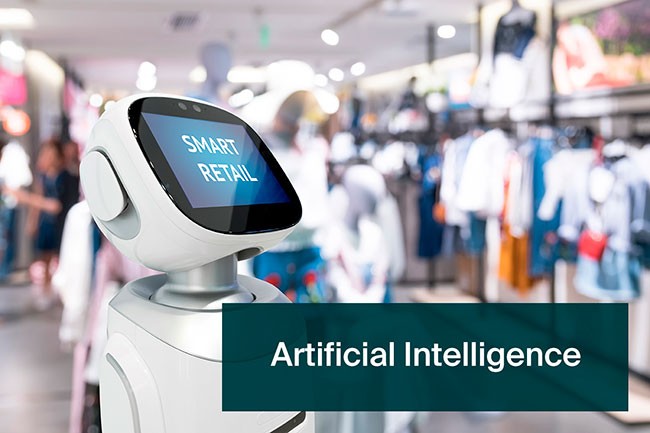
Artificial intelligence (AI) investment by major retail brands is skyrocketing and is predicted to reach $7.3 billion by 2022. This technology has seen numerous applications from cashier-less stores with automated checkout, voice recognition technologies using voice searches, smart assistants, chatbots all the way up to full-scale voice commerce solutions. Predictive analytics, personalization, and dynamic content tools are some of the other hallmarks of AI applications in retail. Closing the circle, AI provides product demand forecasting and supply chain optimization.
Internet of Things
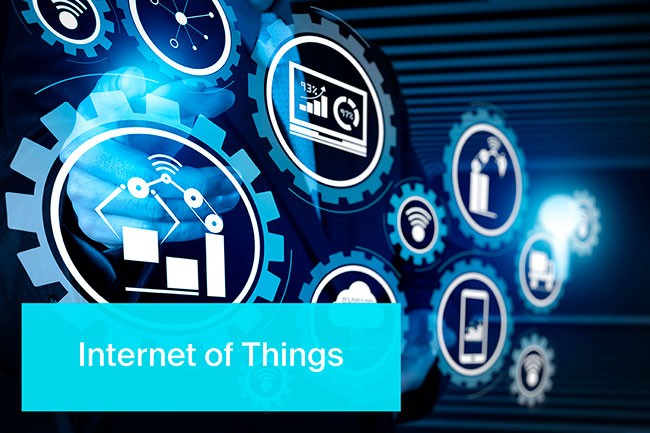
The internet of things (IoT) empowers retail businesses with access to edge analytics, providing a birds-eye view of the supply chain and points of sale. Data gathering sensors placed throughout the store premises, like the iBeacon tech provided by Apple, are gaining momentum. It is used to enable customized shopping based on the customers’ mobile app usage. Ultimately, a smart retail solution with a unified experience for store visitors can be created to influence purchase decisions and boost customer engagement.
Augmented Reality
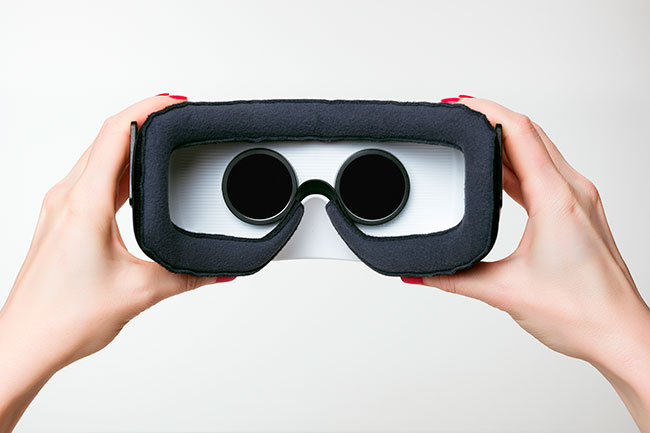
Augmented reality (AR) is another wave of innovation in digital retail. One of the most demanded solutions during the COVID-19 pandemic crisis, AR technology provides stores with product visualization, allowing customers to sample and try out items without physical interaction. The ability to use your smartphone to place furniture and see how it fits in your room is quite an experience. Other useful AR applications in retail include in-store navigation and customer engagement via games and quests.
Virtual Reality
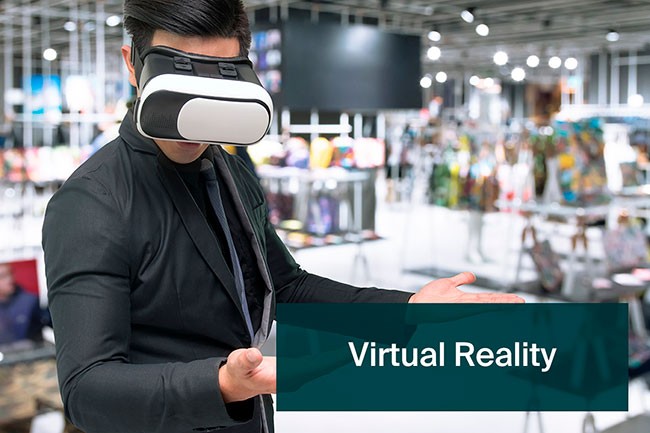
Virtual reality (VR) often goes hand-in-hand with AR tech as part of an extended reality (XR) solution. Instead of just supplementing the physical world with digitally recreated objects, VR creates a whole new reality for customers to interact with, placing them behind the wheel of an automobile or inside the property via VR real estate app to explore it. VR also allows store owners to redesign their interior and test out different shop layouts before deciding on refurbishing their physical locations.
Cloud Services

Cloud Services can power your digital retail solution with features like stock availability monitoring, shipment tracking, and inventory management. These are easily accessible from any of your physical locations or offices and are provided in form of a convenient graphical dashboard interface. Cloud computing enables unlimited storage and scalability for your business with the added benefit of all the bulky digital infrastructure management processes taken off your shoulders.
Introducing these technologies into your retail business requires serious groundwork including software development, integrations with current processes, on-site testing & performance optimization. Distributed Hub has a lot of experience to its credit, having deployed projects of various degrees of complexity in each of these categories.
How to Get Started with Digital Transformation in Retail
The mindset of your customers is constantly changing in reflection to life circumstances and the evolution of the digital world. The irreversible setbacks of the coronavirus will permanently alter customer shopping behavior on a global scale. It is imperative to always stay on the pulse of modern digital retail trends and follow the retail giants such as Amazon and Walmart that are leading the innovation.
The road to digital transformation in retail is riddled with the heavy rocks of migrating from a legacy eCommerce solution, integrating with current business processes, and mastering cutting-edge technology.
